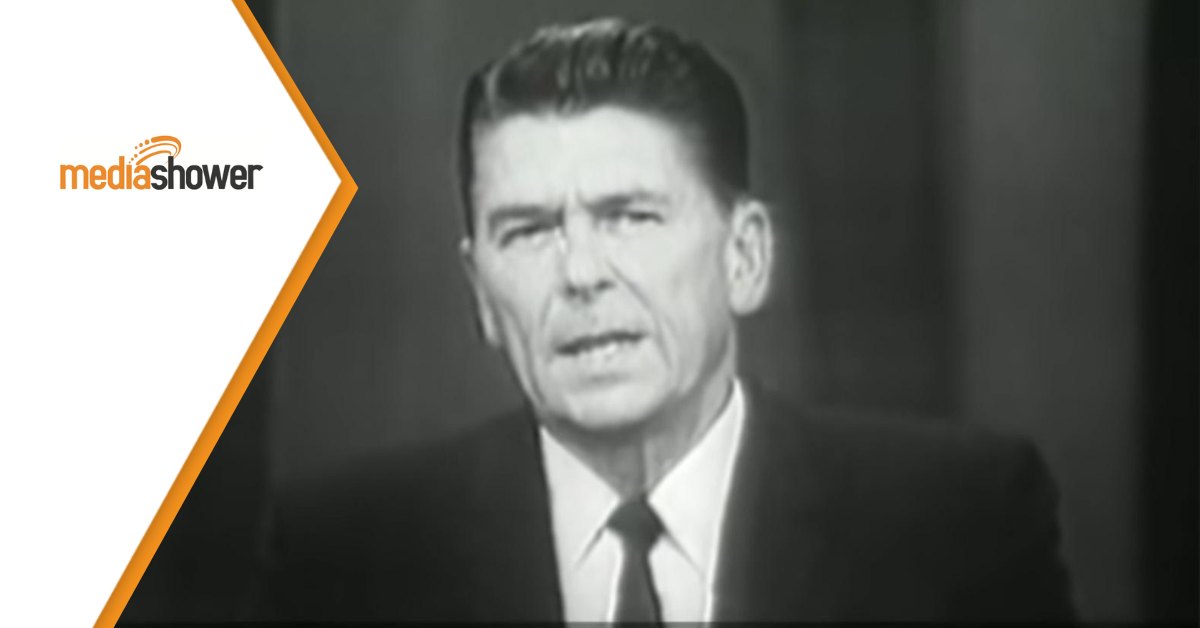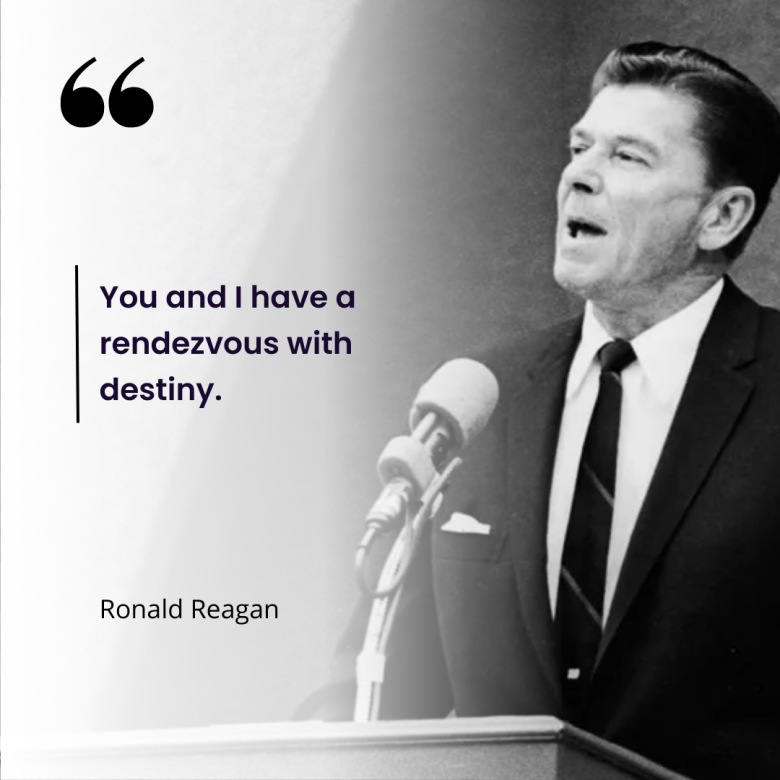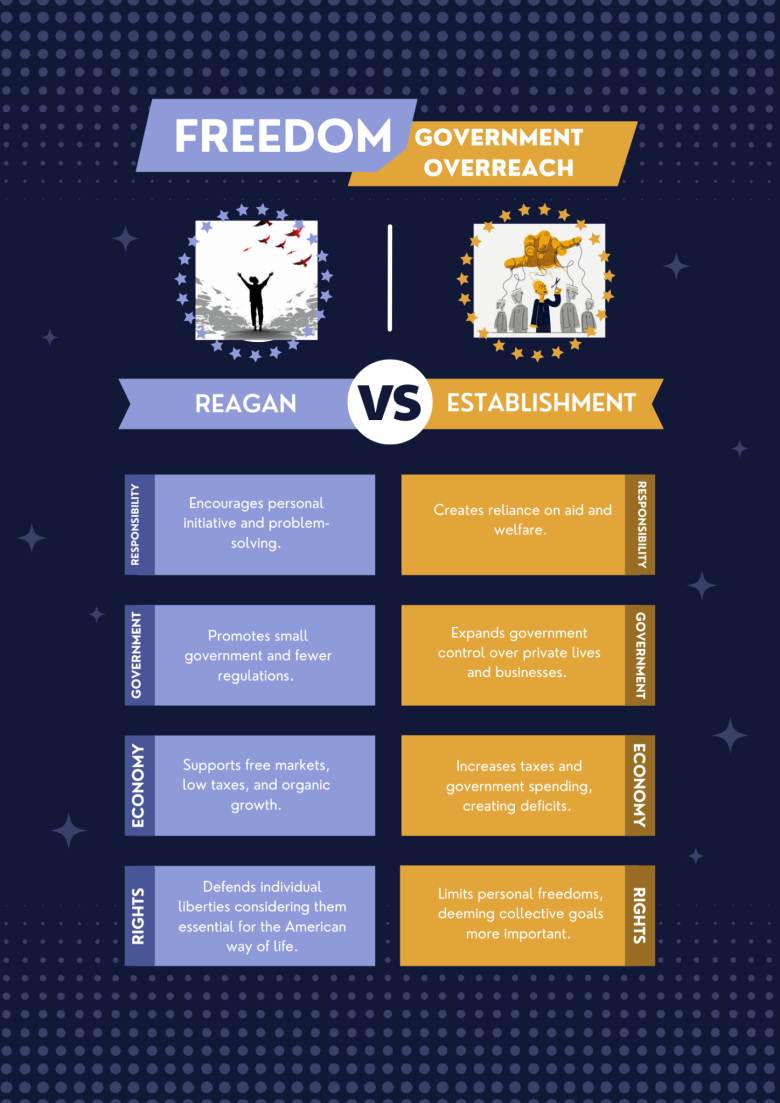
TLDR: Imagine distilling your most passionate beliefs into thirty minutes that could change millions of minds. That’s exactly what Ronald Reagan accomplished with his legendary speech “A Time for Choosing” — and his techniques can transform your communication today.
So what? On October 27, 1964, Ronald Reagan delivered a televised speech establishing the central principles of American Conservatism and jumpstarting his political ascent.
Yet, “A Time for Choosing” was more than a political address; with this speech, Reagan demonstrated how masterful communication can transform complex ideas into compelling truths that move people to action.
While the speech’s politics belong to history, its communication techniques offer a blueprint for any leader seeking to inspire change.
Let’s explore the five key communication strategies that made this speech unforgettable.
Craft a Clear Narrative
“I have spent most of my life as a Democrat. I recently have seen fit to follow another course.”
Reagan opens with a personal story that accomplishes three crucial goals:
- Establishes credibility through vulnerability
- Creates immediate emotional connection
- Sets up a larger narrative of transformation
Example from the Speech: In addition to his own personal note, Reagan shares the story of a Cuban refugee, using an emotional story to transform abstract political concepts into urgent human realities.
Lesson for Communicators: Start your presentations with a personal story that shows why you care about your message. Let your audience see the human stakes before diving into data or details.
Simplify the Complex
 Simplicity is relatable. Complexity is daunting.
Simplicity is relatable. Complexity is daunting.
“Well, I’d like to suggest there is no such thing as a left or right. There’s only an up or down.”
Great communicators don’t overwhelm — they illuminate. Reagan demonstrates how to:
- Break down complex issues into clear choices
- Use metaphors that make abstract ideas concrete
- Create frameworks that simplify decision-making
Example from the Speech: Instead of diving into political theory, Reagan reframes the entire debate into a simple directional choice. This makes his message instantly accessible and memorable.
Lesson for Communicators: Identify the core concept in your message. Create a simple analogy or framework that makes it easy to grasp and remember.
Repeat Key Messages

Reagan’s strategic use of repetition shows how to:
- Reinforce key messages
- Build emotional connection
- Create memorable rhythms
- Drive home crucial points
Example from the Speech: The repeated phrase “you and I,” sprinkled throughout the speech, transforms from simple words into a powerful tool for building unity and shared purpose.
Lesson for Communicators: Choose one key phrase that captures your essential message. Use it strategically throughout your presentation at emotional high points.
Create a Contrast
“This is the issue of this election: whether we believe in our capacity for self-government or whether we abandon the American revolution…”
Reagan demonstrates how contrast can:
- Clarify choices
- Heighten emotional impact
- Engage critical thinking
- Drive decision-making
Example from the Speech: Throughout the address, Reagan pairs current challenges with future possibilities, making the stakes crystal clear.
Lesson for Communicators: Frame your message as a choice between two distinct futures. Let the contrast help your audience see why your path forward matters.

Inspire Action
“We’ll preserve for our children this, the last best hope of man on earth, or we’ll sentence them to take the last step into a thousand years of darkness.”
Reagan closes by transforming emotional investment into a moral imperative. He shows how to:
- Address both hopes and fears
- Make action feel urgent and necessary
- Connect present choices to future consequences
- Create a compelling call to action
Example from the Speech: Reagan’s conclusion ties personal emotion to public action, making involvement feel both necessary and noble.
Lesson for Communicators: End your presentations by connecting emotional resonance to specific, actionable steps.
Communicator Takeaways
Reagan’s “A Time for Choosing” demonstrates five essential communication lessons:
- Tell stories. Personal anecdotes capture attention, engage the mind, and make messages memorable.
- Simplify complexity. People find simple concepts more relatable and easier to stomach.
- Repeat your message. Repetitions clarify and reinforce your message, lending it an intense emotional load.
- Highlight choices through contrasts. Contrasts engage the mind, clarify, and allow you to guide the decision-making of your audience.
- Connect emotionally. Appeal to strong emotions like the fear of loss or the hope of a better life to inspire action.
Master these techniques to elevate your communication, and your message will resonate with people long after your words are spoken.
At Media Shower, we help you make communication that moves people to action. Start a free trial of our marketing platform today.